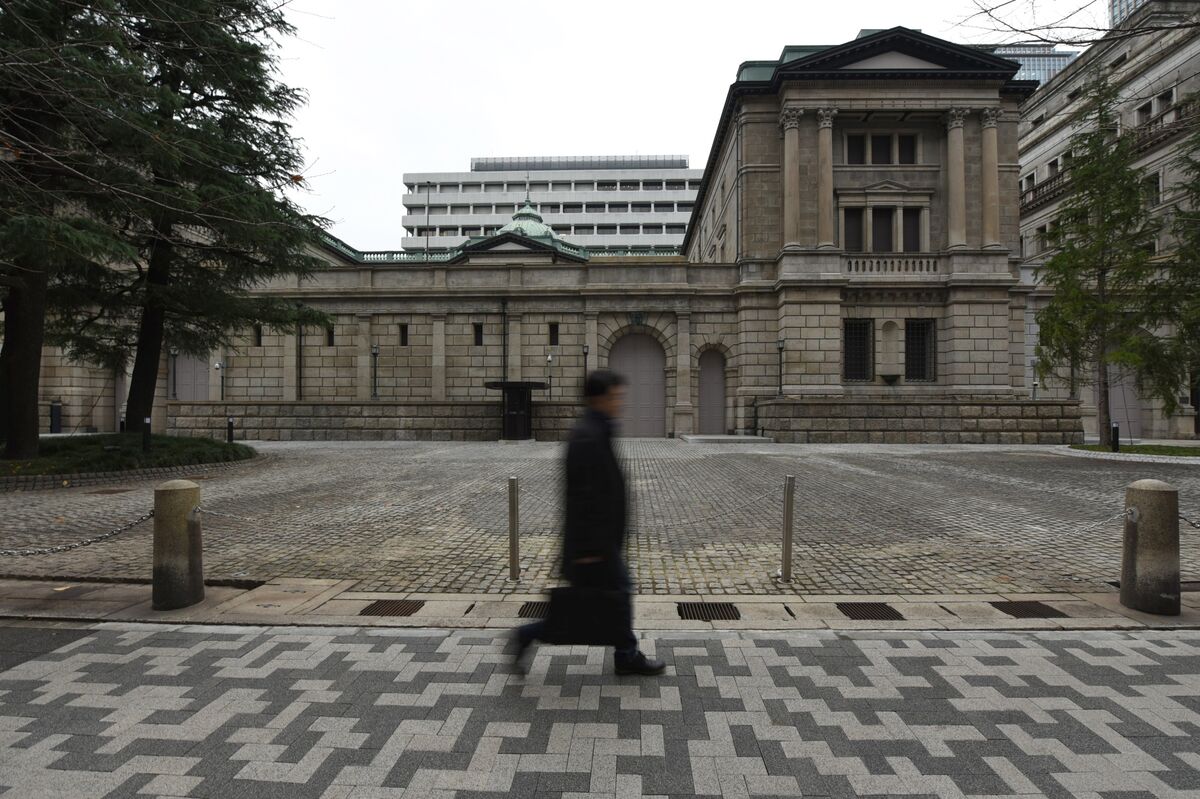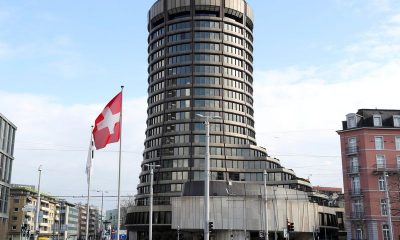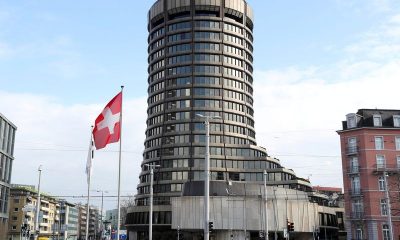Economy
BOJ’s Adachi sees only small chance of July policy tweak

Bank of Japan board member Seiji Adachi said the chance of tweaking the bank’s yield curve control policy at next month’s rate review was small given diminishing market distortions and a lack of price trend data.
He also said the central bank does not use monetary policy as a tool to arrest yen declines, ruling out the chance of a near-term change to Japan’s ultra-low interest rates.
“The shape of the yield curve is quite smooth and the Japanese government bond (JGB) yield is functioning as a base rate for the corporate bond market,” Adachi told reporters after meeting with business leaders in Kagoshima, southern Japan.
“If market conditions don’t change much from now, the chance of us tweaking yield curve control in July to arrest any distortion in the yield curve will be small,” he said.
The remarks were the strongest yet from a BOJ policymaker ruling out the chance of a policy tweak at the next meeting scheduled on July 27-28.
With inflation holding above the BOJ’s 2% target for more than a year now, the bank is widely expected to revise up its price forecasts at a quarterly review of its projections in July.
That has led some market players to bet the BOJ could tweak YCC at the July meeting to address market distortions caused by its heavy-handed defence of the 0% cap on the 10-year yield.
Adachi said the BOJ must look at consumer price data for July onward to judge whether inflation was overshooting its baseline scenario. The July data won’t be available until after the BOJ’s July 27-28 meeting.
“Personally, I feel it’s hard to make a strong call on whether Japan’s price trend is overshooting our baseline scenario just with inflation data up until June,” he said.
“It’s therefore tricky to say we can change policy in July on the assumption that inflation is overshooting our forecasts or on track to stably hit our target.”
Adachi, who is considered one of a handful of advocates of aggressive easing on the BOJ board, said risks to the price outlook were skewed to the downside long-term due to a weak global economic outlook.
“In a sense, we’re moving closer to achieving our price target. But there’s high uncertainty over our baseline inflation outlook, so it’s premature to tweak monetary policy,” he said in a speech to Kagoshima business leaders.
BEHIND THE CURVE
Adachi’s dovish remarks echo those of Governor Kazuo Ueda, who has stressed the need to keep monetary policy ultra-loose until there is more evidence wages will keep rising next year, helping Japan sustainably hit his 2% inflation target.
But not all in the nine-member board seem to agree.
Minutes of the bank’s April meeting showed a number of board members warning of the side-effects of the policy and the risk of being too late in raising interest rates, highlighting a rift within the group on how soon the BOJ should follow global counterparts in phasing out stimulus.
At Ueda’s debut rate review in April, one member said the BOJ must ensure its policy “does not fall behind the curve,” as wages and inflation were already showing signs of accelerating, according to the minutes of the meeting released on Wednesday.
Another member said the BOJ must avoid a situation where it had to make abrupt changes to interest rates, as that would cause huge disruptions to businesses accustomed to extremely low interest rates.
“The BOJ must humbly monitor price and wage developments, and respond not too quickly, but also not too slowly” the second member said.
Economy
Russian central bank says it needs months to make sure CPI falling before rate cuts -RBC


© Reuters. Russian Central Bank Governor Elvira Nabiullina attends a news conference in Moscow, Russia June 14, 2019. REUTERS/Shamil Zhumatov/File Photo
MOSCOW (Reuters) – Russia’s central bank will need two to three months to make sure that inflation is steadily declining before taking any decision on interest rate cuts, the bank’s governor Elvira Nabiullina told RBC media on Sunday.
The central bank raised its key interest rate by 100 basis points to 16% earlier in December, hiking for the fifth consecutive meeting in response to stubborn inflation, and suggested that its tightening cycle was nearly over.
Nabiullina said it was not yet clear when exactly the regulator would start cutting rates, however.
“We really need to make sure that inflation is steadily decreasing, that these are not one-off factors that can affect the rate of price growth in a particular month,” she said.
Nabiullina said the bank was taking into account a wide range of indicators but primarily those that “characterize the stability of inflation”.
“This will take two or three months or more – it depends on how much the wide range of indicators that characterize sustainable inflation declines,” she said.
The bank will next convene to set its benchmark rate on Feb. 16.
The governor also said the bank should have started monetary policy tightening earlier than in July, when it embarked on the rate-hiking cycle.
Economy
China identifies second set of projects in $140 billion spending plan


© Reuters. FILE PHOTO: Workers walk past an under-construction area with completed office towers in the background, in Shenzhen’s Qianhai new district, Guangdong province, China August 25, 2023. REUTERS/David Kirton/File Photo
SHANGHAI (Reuters) – China’s top planning body said on Saturday it had identified a second batch of public investment projects, including flood control and disaster relief programmes, under a bond issuance and investment plan announced in October to boost the economy.
With the latest tranche, China has now earmarked more than 800 billion yuan of its 1 trillion yuan ($140 billion) in additional government bond issuance in the fourth quarter, as it focuses on fiscal steps to shore up the flagging economy.
The National Development and Reform Commission (NDRC) said in a statement on Saturday it had identified 9,600 projects with planned investment of more than 560 billion yuan.
China’s economy, the world’s second largest, is struggling to regain its footing post-COVID-19 as policymakers grapple with tepid consumer demand, weak exports, falling foreign investment and a deepening real estate crisis.
The 1 trillion yuan in additional bond issuance will widen China’s 2023 budget deficit ratio to around 3.8 percent from 3 percent, the state-run Xinhua news agency has said.
“Construction of the projects will improve China’s flood control system, emergency response mechanism and disaster relief capabilities, and better protect people’s lives and property, so it is very significant,” the NDRC said.
The agency said it will coordinate with other government bodies to make sure that funds are allocated speedily for investment and that high standards of quality are maintained in project construction.
($1 = 7.1315 renminbi)
Economy
Russian central bank says it needs months to make sure CPI falling before rate cuts -RBC


© Reuters. Russian Central Bank Governor Elvira Nabiullina attends a news conference in Moscow, Russia June 14, 2019. REUTERS/Shamil Zhumatov/File Photo
MOSCOW (Reuters) – Russia’s central bank will need two to three months to make sure that inflation is steadily declining before taking any decision on interest rate cuts, the bank’s governor Elvira Nabiullina told RBC media on Sunday.
The central bank raised its key interest rate by 100 basis points to 16% earlier in December, hiking for the fifth consecutive meeting in response to stubborn inflation, and suggested that its tightening cycle was nearly over.
Nabiullina said it was not yet clear when exactly the regulator would start cutting rates, however.
“We really need to make sure that inflation is steadily decreasing, that these are not one-off factors that can affect the rate of price growth in a particular month,” she said.
Nabiullina said the bank was taking into account a wide range of indicators but primarily those that “characterize the stability of inflation”.
“This will take two or three months or more – it depends on how much the wide range of indicators that characterize sustainable inflation declines,” she said.
The bank will next convene to set its benchmark rate on Feb. 16.
The governor also said the bank should have started monetary policy tightening earlier than in July, when it embarked on the rate-hiking cycle.

 Forex3 years ago
Forex3 years agoForex Today: the dollar is gaining strength amid gloomy sentiment at the start of the Fed’s week

 Forex3 years ago
Forex3 years agoUnbiased review of Pocket Option broker

 Forex3 years ago
Forex3 years agoDollar to pound sterling exchange rate today: Pound plummeted to its lowest since 1985

 Forex3 years ago
Forex3 years agoHow is the Australian dollar doing today?

 Cryptocurrency3 years ago
Cryptocurrency3 years agoWhat happened in the crypto market – current events today

 World3 years ago
World3 years agoWhy are modern video games an art form?

 Commodities3 years ago
Commodities3 years agoCopper continues to fall in price on expectations of lower demand in China

 Economy3 years ago
Economy3 years agoCrude oil tankers double in price due to EU anti-Russian sanctions



























